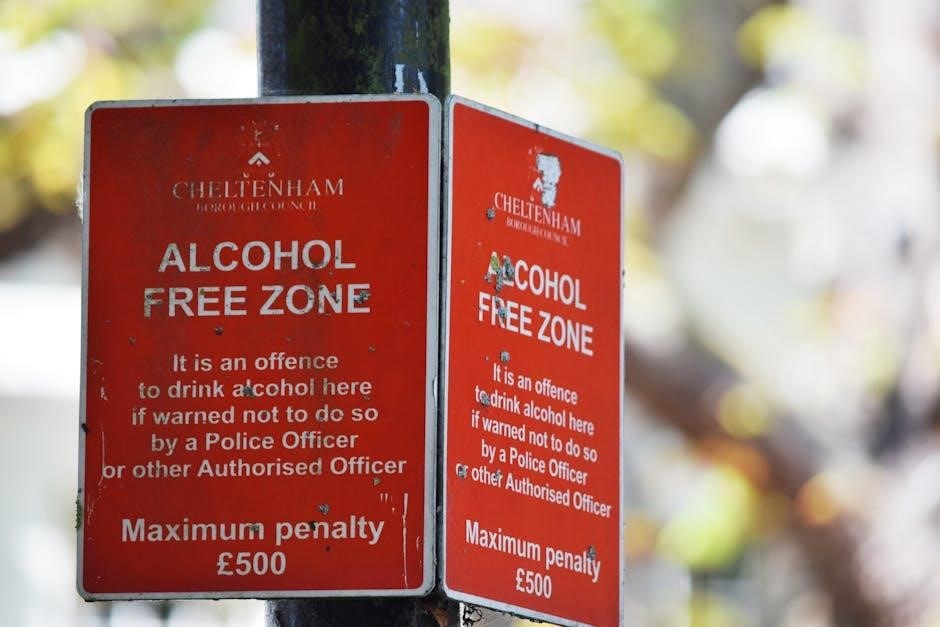Bananagrams: Comprehensive Rules and Gameplay Guide
Bananagrams is a fast-paced word game where players race to create interlocking crossword grids using letter tiles. This guide offers a comprehensive breakdown of the game’s rules. It includes instructions for gameplay, tile distribution, and verification. Get ready for a word-building adventure!
Objective of the Game
The primary objective of Bananagrams is to be the first player to utilize all of your face-up letter tiles to construct a valid word grid. This grid must consist of interconnected words, reading either horizontally from left to right or vertically from top to bottom. The words must intersect, sharing common letters, similar to a crossword puzzle.
Players are in a constant race against each other. This means that they are building and rearranging their individual grids simultaneously and independently. There are no turns in Bananagrams. The game continues until one player successfully integrates all their tiles into their grid. They must then shout “Bananas!” to signal their completion.
The ultimate goal is not just speed, but also accuracy. The winning grid must be free of spelling errors and consist of words found in a standard dictionary. Once a player declares “Bananas!”, the other players verify the grid. A successful grid means victory, while errors can lead to disqualification. It’s a blend of vocabulary, quick thinking, and a little bit of luck!

Number of Players and Tile Distribution
Bananagrams is designed for 2 to 8 players, making it a versatile game for small gatherings and larger groups. The game includes 144 letter tiles, which are distributed among the players at the start of each round. The number of tiles each player receives depends on the total number of participants.
For games with 2 to 4 players, each individual begins with 21 tiles. When there are 5 or 6 players, the starting number of tiles is reduced to 15 per person. In larger games with 7 or 8 players, each player receives 11 tiles to start. This adjustment ensures a balanced gameplay experience regardless of the group size.
All the tiles begin face down in the center of the playing area, collectively known as the “Bunch”. Players draw their initial set of tiles from this Bunch. Players need to keep them hidden from their opponents. Understanding the correct tile distribution is crucial for beginning the game fairly. It sets the stage for the word-building frenzy that is about to unfold.
Starting the Game: The “Split” Command
The commencement of a Bananagrams round is marked by the exciting “Split!” command. This simple word unleashes a flurry of activity as players simultaneously begin their word-building quest. Before the “Split!” call, each player draws their allotted number of tiles from the central “Bunch,” keeping them face down and concealed from others.
Any player can initiate the game by shouting “Split!” at any moment. Upon hearing this command, all participants immediately flip their tiles face up. This reveals their individual collection of letters. It signals the official start of the word-forming race. From this point forward, the game progresses in real-time with no designated turns. Everyone is actively engaged in constructing their word grids.
The “Split!” command serves as the starting pistol, setting the stage for a fast-paced and competitive environment. It eliminates any hesitation and throws everyone headfirst into the game. It requires quick thinking and wordplay skills. The call to action transforms a quiet setting into a lively arena of linguistic creativity, where every player is striving to be the first to use all their tiles and claim victory.
Building Your Word Grid
Once the “Split!” command has been issued, the real challenge of Bananagrams begins: building your word grid. Players must swiftly arrange their face-up letter tiles into interconnected words, forming a crossword-style structure. Words can be formed horizontally (left to right) or vertically (top to bottom), and each new word must connect to an existing word in your grid by sharing a common letter at the intersection.
This interconnectedness is crucial; isolated words or separate groupings are not permitted. The grid must function as a single, cohesive unit. Players are allowed, and even encouraged, to rearrange their words on their playing surface as often as they like during the game. This dynamic process involves constant evaluation and optimization as players seek to incorporate new tiles and expand their grids.
Flexibility and adaptability are key to success. A grid that initially seems promising may need to be completely overhauled as new letters are added or existing words are found to be limiting. This iterative process of building, rearranging, and refining is what makes Bananagrams such an engaging and mentally stimulating game. The ability to think creatively and strategically is essential for creating a winning word grid.
Using Blank Tiles
Bananagrams includes blank tiles, which add a layer of strategic depth to the game. These tiles can represent any letter you choose, offering valuable flexibility when building your word grid. When incorporating a blank tile, you must decide which letter it will represent and mentally commit to that choice for the remainder of the game.
The blank tile functions as a wild card, allowing you to complete words that might otherwise be impossible with your current letter selection. However, it’s crucial to remember the letter you’ve assigned to the blank, as you’ll need to accurately identify it during the “Bananas!” call and subsequent verification. Failure to recall the correct letter can invalidate your win.
Strategic placement of blank tiles is essential. Consider the potential words that could be formed and choose the letter that maximizes your grid’s connectivity and efficiency. Be mindful of the letters you anticipate needing later in the game and how the blank tile can help you achieve those goals. The clever use of blank tiles can be the difference between a stalled grid and a winning masterpiece. They are valuable assets for those who can master their potential.
The “Bananas!” Call and Verification
The thrilling climax of Bananagrams arrives when a player successfully incorporates all their letter tiles into a valid, interconnected word grid. At this triumphant moment, the player must exclaim “Bananas!” to signal their completion. This call immediately halts all other players’ construction efforts, shifting the focus to verification.
Following the “Bananas!” call, the other players meticulously inspect the declared winner’s grid. This verification process ensures that all words are valid, properly connected, and free of spelling errors. A standard dictionary serves as the ultimate authority for word legitimacy. Any instance of misspelling, improper connection, or usage of unacceptable words (like proper nouns or abbreviations) will disqualify the claim.
If the grid passes inspection, the player is declared the winner, earning the coveted title of “Top Banana.” However, if errors are discovered, the player must return their tiles to the “bunch,” and the game resumes. This verification phase adds a layer of suspense and accountability, emphasizing the importance of careful construction and a strong vocabulary. A flawed grid can lead to a swift and humbling defeat!

Unacceptable Words: Proper Nouns and Abbreviations
In the fast-paced world of Bananagrams, word validity is paramount. To maintain fairness and a common ground, certain types of words are deemed unacceptable and cannot be used within your word grid. These primarily include proper nouns and abbreviations.
Proper nouns, which are names of specific people, places, or things (e.g., “London,” “Sarah,” “Amazon”), are prohibited. The focus of the game rests on common vocabulary, accessible to all players, rather than specialized knowledge. Similarly, abbreviations, shortened forms of words or phrases (e.g., “ASAP,” “Dr.,” “USA”), are also disallowed. The emphasis is on forming complete, recognized words.
The use of a standard dictionary is encouraged to resolve any disputes regarding word validity. Players should consult the dictionary to confirm that a word is both correctly spelled and a legitimate entry. This rule ensures that the game remains challenging, engaging, and based on a shared understanding of the English language. By adhering to these restrictions, players can focus on strategic tile placement and creative wordplay within the established framework of the game. Using only standard dictionary words ensures a level playing field.

Simultaneous Play and No Turns
Bananagrams distinguishes itself from many other word games through its dynamic and engaging approach to gameplay. A key element that sets it apart is the concept of simultaneous play, eliminating the traditional turn-based structure. In Bananagrams, every player is actively involved at all times, fostering a sense of excitement and urgency throughout the game.
The absence of turns means that players are not restricted by a set order, instead, they all race against each other to create their word grids. From the moment the “Split!” command is called, all players simultaneously turn their tiles face up and begin constructing words. This real-time element encourages quick thinking, strategic tile placement, and a constant reevaluation of one’s own grid in relation to the tiles available.

The simultaneous nature of the game means that players must adapt to the ever-changing landscape of available letters. As other players call “Peel!” and add more tiles to their hands, the pool of unused letters constantly diminishes, requiring players to adjust their strategies and find creative solutions to complete their grids. This continuous interaction ensures that Bananagrams remains a captivating and unpredictable experience from start to finish. The faster you are, the better your chances of winning.
Variations: Fewer Tiles for Shorter Games
While the standard rules of Bananagrams offer a thrilling and engaging experience, the game’s adaptable nature allows for variations that can cater to different preferences and time constraints. One popular variation involves reducing the number of tiles each player starts with, resulting in shorter, more streamlined games. This modification is particularly well-suited for younger players, beginners, or situations where time is limited.
By decreasing the initial tile count, the game becomes less daunting and more accessible. Players can focus on building smaller, more manageable grids, which can be especially beneficial for those who are new to the game or who prefer a quicker pace. The reduced number of tiles also means that the game is less likely to drag on, ensuring that players remain engaged and entertained throughout.
The exact number of tiles to remove can be adjusted based on the desired game length and the skill level of the players. For instance, in a game with 2-4 players, the initial tile count could be reduced from 21 to 15 or even 10. Similarly, for games with more players, the starting tile count can be proportionally decreased. This flexibility allows players to customize the game to their specific needs and preferences, ensuring that Bananagrams remains a fun and enjoyable experience for everyone involved. It also makes it easier to pack up.
Bananagrams vs. Scrabble: Key Differences
While both Bananagrams and Scrabble are word-building games that involve creating interconnected words, there are several key differences that distinguish them. One of the most significant differences lies in the gameplay format. In Scrabble, players take turns placing tiles on a shared game board, accumulating points based on the letters used and the placement of the words on bonus squares. In contrast, Bananagrams is a simultaneous play game, where all players race against each other to build their own individual word grids.
Another key difference is the scoring system. Scrabble assigns different point values to each letter, with rarer letters like Q and Z being worth more. Bananagrams, on the other hand, does not have a scoring system. The objective is simply to be the first player to use all of their tiles in a valid word grid. This makes Bananagrams a faster-paced and more accessible game, as players don’t need to worry about calculating scores or strategizing to maximize their point earnings.
Furthermore, Scrabble involves a strategic element of blocking opponents and controlling valuable board spaces. Bananagrams, with its simultaneous play and individual grids, eliminates this aspect of player interaction. The focus is solely on individual word-building skills and speed. Finally, Bananagrams is more portable.
